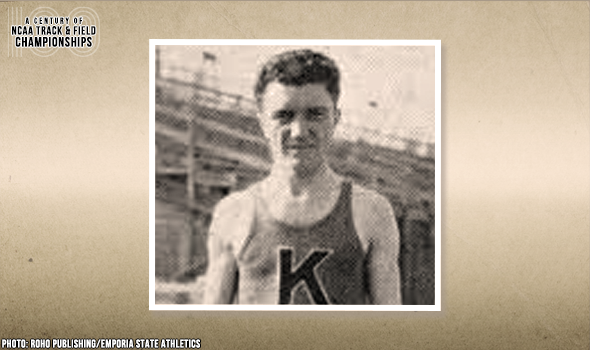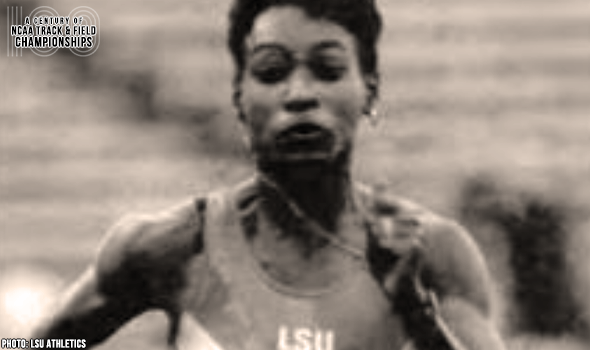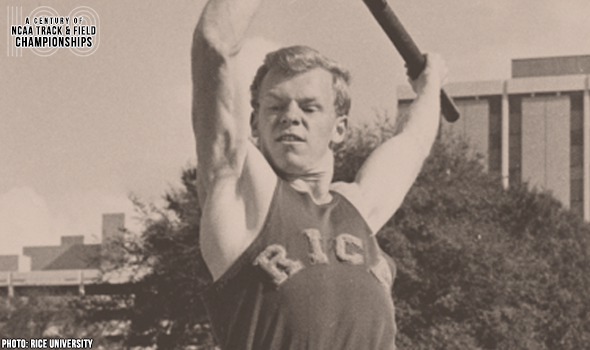
Boden Dominated Javelin, Set World Record
It was just March, but 1990 was already being hailed as the “Year of the Javelin.”
Patrik Boden of Texas was the biggest reason, especially after heaving the implement for a shocking world record of 89.10m (292-4) on March 24. That was more than 20 feet farther than he had ever thrown before – his week-old collegiate record of 82.78m (271-9).
While the temperature was in the 40s, everything else was perfect for Boden’s opening throw – particularly the strong northerly wind, coming off of Boden’s right shoulder as he threw. Only about two dozen people were on hand to watch the javelin, part of a quadrangular meet with the long throws taking place at Clark Field outside of Texas Memorial Stadium in Austin.
“I really can’t believe it happened,” Boden told L. Scott Hainline of the Austin American-Statesman. “I thought I could throw well, but 290 feet? I haven’t realized what I’ve done yet, it really hasn’t hit me.”
“It will be hard to repeat this throw,” said Boden, who added the second-longest throw in collegiate history at 83.54m (274-1) in the third round. Two weeks later he won the Texas Relays at 83.56m (274-2) and owned college’s three longest throws for the next 27 years, with the 292-4 lasting to this day as the collegiate record.
Boden, who became a hero in his native Sweden, never lost a collegiate meet during his three-year career with the Longhorns, and that included three consecutive titles at the NCAA Championships from 1989 to 1991. His first NCAA title came by the smallest margin of victory in meet history at 13 cm (5 inches) and the last by the then-largest margin of 7.34m (24-1), which Anderson Peters of Mississippi State eclipsed in 2019 with a winning margin of 8.19m (26-11).
Texas had become a haven for javelin throwers, winning seven NCAA titles in a nine-year span (Einar Vilhjalmsson in 1983-84 and Dag Wennlund in 1986-87 before Boden’s trio). In fact, Boden, UT throwing coach Mike Sanders and three other javelin throwers were featured on the cover of the Longhorns’ 1990 media guide with the title, “The Javelin Capital of Collegiate Track and Field.”
Boden’s world record was the last one set outdoors by a collegian in any event. Two months later, he commented to Randy Riggs of the Austin American-Statesman, “I hope people understand you can’t throw that far every meet. But I don’t think they do understand, at least not in this country. I throw 274 at the Relays, my second-best throw ever, and people ask me what went wrong and why I didn’t throw better. They don’t understand how perfect conditions have to be to even consider going for a world record.”
The NCAA and collegiate track & field will mark a momentous milestone in the spring of 2021 -- the 100th anniversary of the NCAA Championships and with that, the NCAA Track & Field Championships. In June 1921, the University of Chicago hosted the first track & field championships in NCAA history.
This point can’t be emphasized enough: Not only was the event the first for NCAA track & field, but the first championships for any sport under the sponsorship of the NCAA.
To celebrate, over each of the next 365 days, the U.S. Track & Field and Cross Country Coaches Association (USTFCCCA) will celebrate moments, student-athletes, and coaches that have made a century’s worth of championships special. From humble beginnings to important historical milestones to the modern-day, collegiate track & field has evolved with the American society.
The 2021 edition of the NCAA Division I Outdoor Track & Field Championships begin with preliminary round action on May 27-29 in Jacksonville, Fla., and College Station, Texas. The championships final site and culmination of the celebration is slated for June 9-12, 2021 at the newly rebuilt Hayward Field in Eugene, Ore.

Clemson’s Ross Kept Getting Faster In 1995
Duane Ross PR’d twice in the 110H at the 1995 NCAA DI Outdoor T&F Championships. When Ross won in 13.32, he became the No. 3 performer in collegiate history.

Illinois’ Kerr Went Back-To-Back At NCAAs
George Kerr won back-to-back 800/880 titles at the NCAA Outdoor T&F Championships in 1959 & 1960. Kerr set a meet record of 1:46.4 in the 800 meters in 1960.

UCLA’s Baucham Bounded To TJ CR In 2005
Candice Baucham won the triple jump at the 2005 NCAA DI Outdoor T&F Championships with a collegiate record of 14.07m (46-2). Baucham took the event by more than one foot.

San Romani Went From Unknown To Legend
Archie San Romani won back-to-back 1500/mile crowns at the NCAA Outdoor T&F Championships in 1935 & 1936.

Auburn’s Glance Made Them Look Twice
Harvey Glance completed the 100-200 double as a freshman at the 1976 NCAA DI Outdoor T&F Championships. He set a meet record of 10.16 in the 100.

Nova’s Rhines Did NCAA 5K Three-Peat
Jen Rhines was the first female athlete in the history of the NCAA DI Outdoor T&F Championships to win three consecutive 5K titles.

Georgia’s Erm Cruised To 2019 Decathlon Title
Johannes Erm won the decathlon at the 2019 NCAA DI Outdoor T&F Championships by 342 points with his 8352 total. That was also the fifth-best score in meet history.

McMillen Adapted, Set 1500 MR In 1952
Bob McMillen set a meet record in the 1500 meters of 3:50.7 at the 1952 NCAA Outdoor Track & Field Championships.

LSU’s Duhaney Destroyed NCAA 200 Field In 1992
Dahlia Duhaney owns the largest margin of victory in meet history in the 200 with her 0.44-second winner at the 1992 NCAA DI Outdoor T&F Championships.

Rice’s Roberts Cooked Up Pole Vault Greatness
Dave Roberts was the second man to win three consecutive pole vault titles at the NCAA DI Outdoor T&F Championships, doing so from 1971 to 1973.

